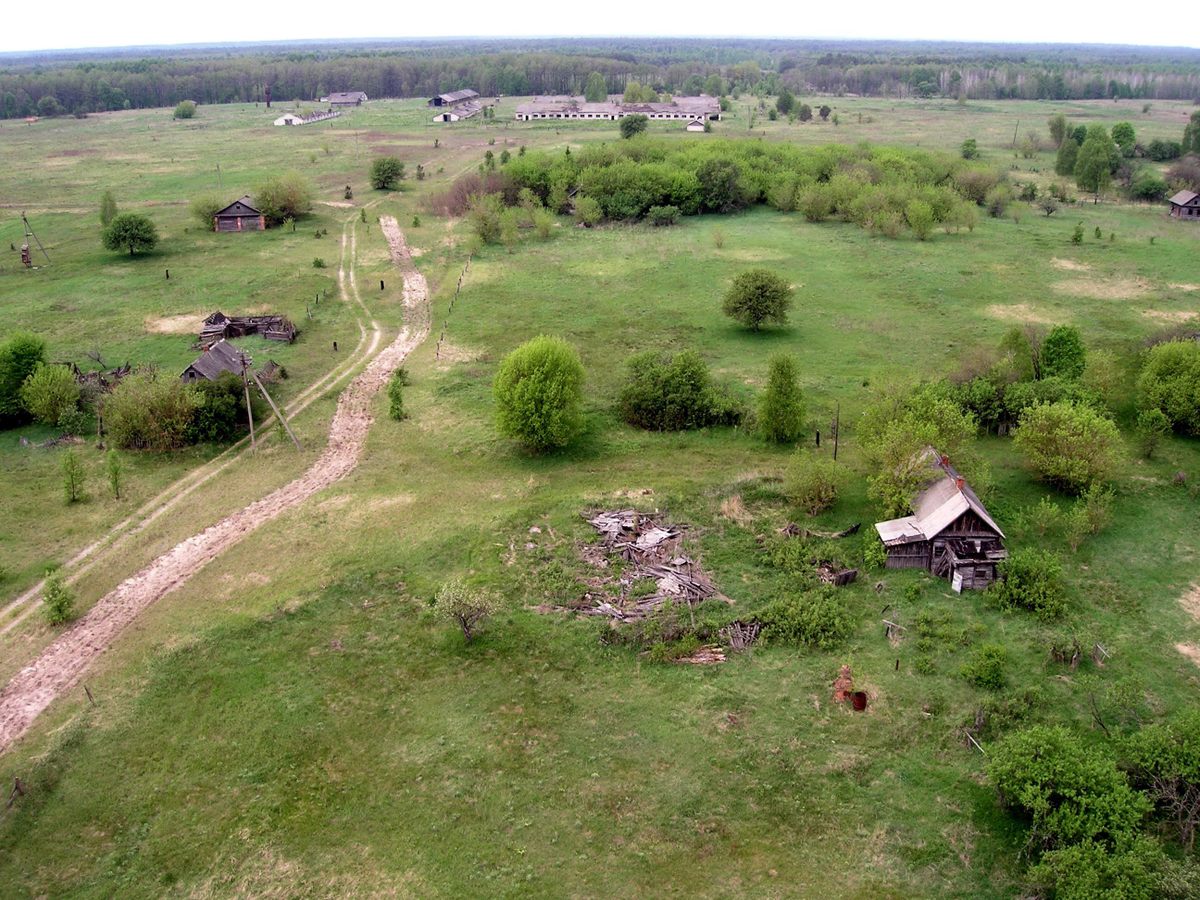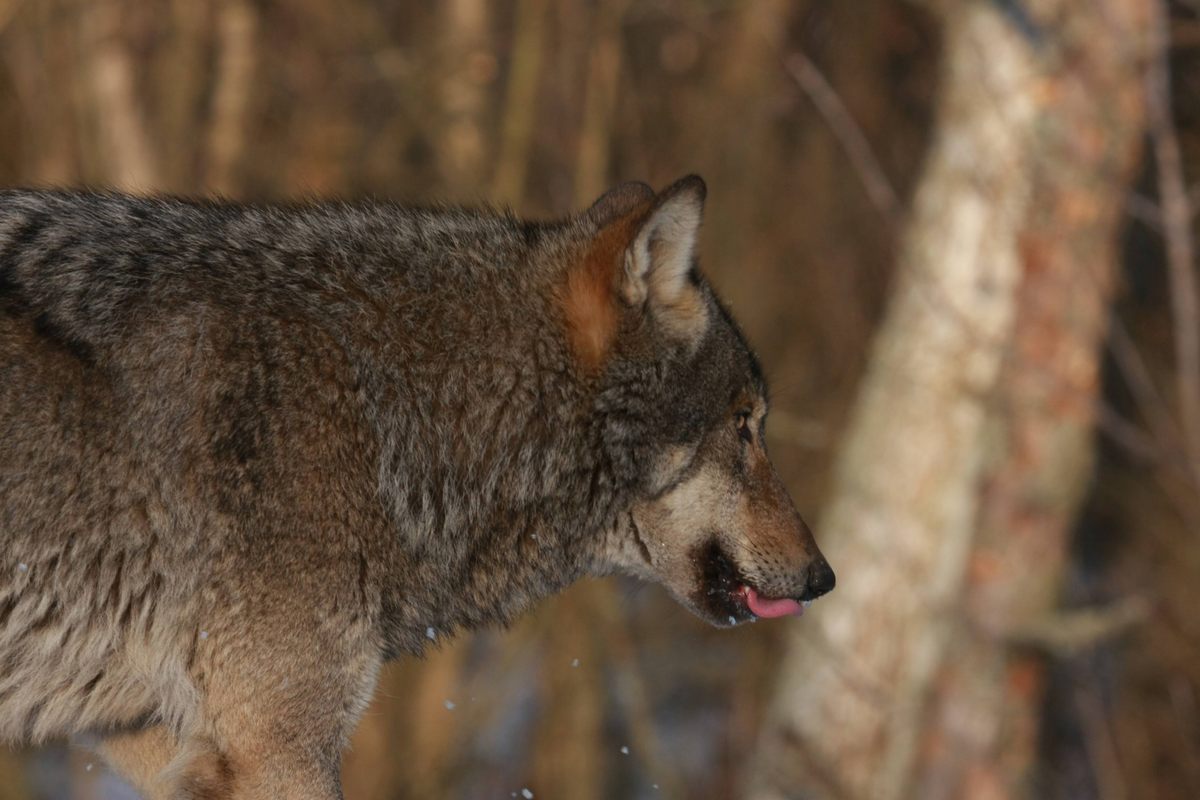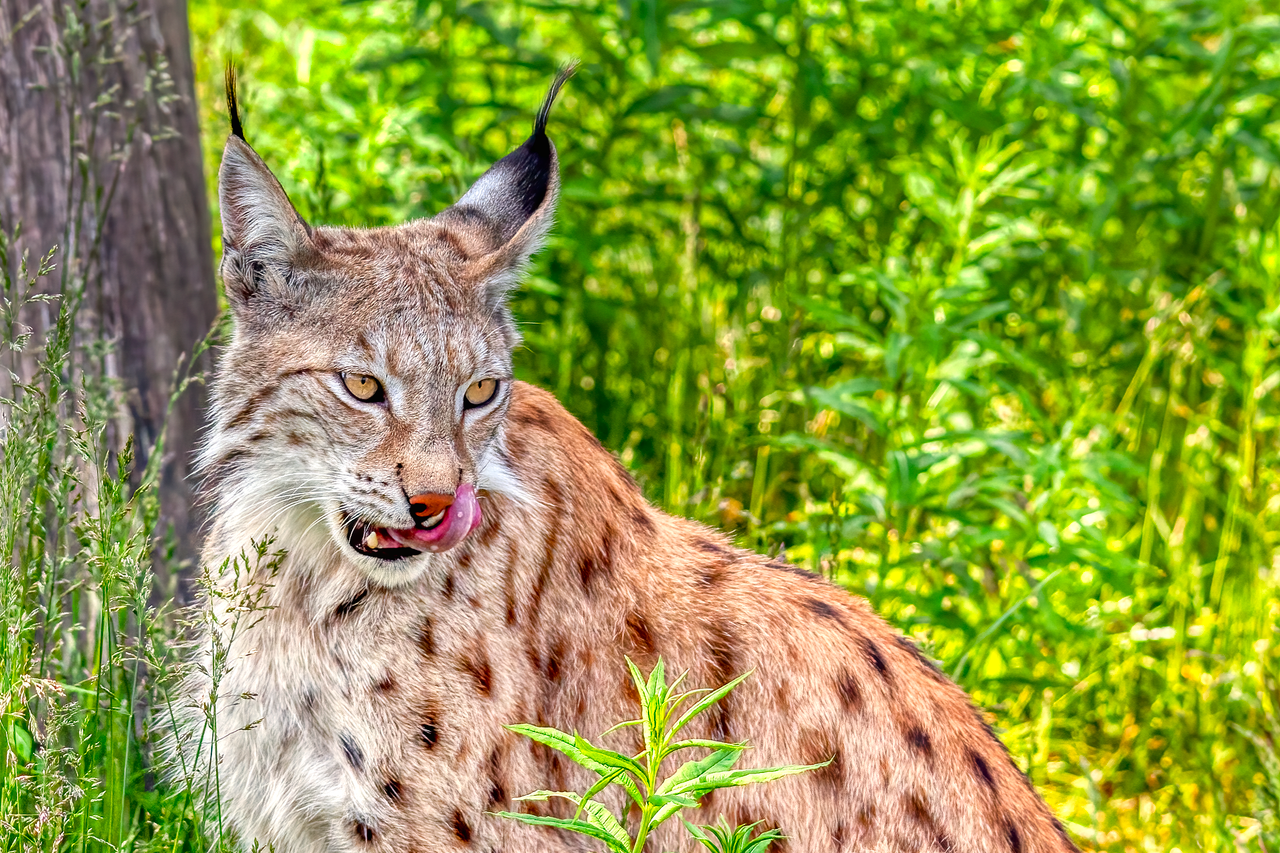The Chernobyl Disaster Created an Unexpected Predator Paradise
In a corner of Belarus, wolves and lynx thrive as a new and surprising ecosystem evolves in the wake of disaster.
Far from their usual forest hideouts, lynx hunt in fallow fields and fall asleep on asphalt roads. Wolves thrive in abandoned villages, denning and breeding in cemeteries. Throughout the Polesie State Radioecological Reserve (PSRR) in southern Belarus, the density of both species is exceptionally high. And another apex predator visits often: Brown bears pass through almost every summer.
Here, on the Belarusian side of the massive area emptied of humans by the 1986 Chernobyl disaster, the story of these animals has remained unknown to most of the world. While Ukraine opened its Chernobyl Exclusion Zone to scientists from abroad, Belarus restricted access, allowing only its own researchers. For more than 35 years, this small group of dedicated scientists has observed and documented unexpected shifts in behavior and biodiversity. Their collected observations were published only in late 2022, as The Biological Diversity of the Animal World of the Polesie State Radioecological Reserve. The thick book, available only in Russian, slipped under the radar of Western scientists and environmentalists. Given the difficult internal political climate in Belarus, and the war in neighboring Ukraine, PSRR has remained almost entirely off limits—but the recently published research gives us a glimpse into a surprising predator paradise that is thriving in ways no one could have predicted.
While Chernobyl is in Ukraine, the 1986 nuclear plant catastrophe sent clouds of radioactivity north into Belarus, contaminating the mosaic of abandoned farmland, meadows, and tree plantations that now make up the PSRR. As the disaster unfolded, about 22,000 people were forced to leave dozens of villages. Dams were built to prevent radioactive water from flowing to densely populated areas—as a result, marshes along the Pripyat River, drained long ago for agriculture, were reestablished. In 1988, the PSRR, covering 2,162 square kilometers (835 square miles) was created as one of Europe’s largest nature reserves. The predators started showing up soon after.

“Before the disaster, there were only a few wolves here, not a lot of available prey, and not enough places to hide,” says Valeriy Lukashevich, a biologist who worked at PSRR for several years and is one of the book’s coauthors. Wolves were considered pests, and Lukashevich says that local and regional governments even offered bounties for pups taken from their dens and killed. Other predators were less common.
“Lynx would show up sometimes but because the area was densely populated it would never stay,” adds coauthor and biologist Valeriy Yurko, who still works at PSRR. “And there were no bears around.”
The apex predators arriving in the PSRR in the wake of the Chernobyl disaster were simply following the food: Beginning in the late 1980s, the wild boar population increased about 780 percent. There were suddenly more than five times the number of elk in the region and roe deer numbers increased by an astounding 1,900 percent. Red deer and European bison, which did not inhabit the area before 1986, moved in and flourished.
Over the past three-plus decades, the number of wolves in the PSRR has increased about 3,000 percent. In the past, lynx only occasionally passed through the area, but by the 2000s, several dozen of the cats called it home. Brown bears visit more often than before but do not stay. “They come from Russia, spend a season in our reserve and then leave,” says Yurko.
It’s not just the numbers of predators that surprised researchers—the animals have also changed their hunting behaviors, adapting to the new ecosystem free from human interference.

For example, lynx here hunt differently than they do in Białowieża Forest, about 500 kilometers (310 miles) west of the PSRR. Białowieża is the last lowland primeval forest in Europe, and straddles the border of Poland and Belarus. According to previous research on Białowieża lynx, the animals there hunt mostly roe deer, with the larger red deer making up much of the rest of their diet.
However, in the PSRR, lynx mainly hunt hare, found in grasslands and meadows. The cats appear more opportunistic, too; Lukashevich has observed a lynx stalking wild ducks, more than a mile from the nearest wooded area.
“The lynx was not afraid of entering the open areas because there were almost no humans there,” he says. Lukashevich believes it’s the lack of human activity that has made the PSRR lynx more willing to hunt outside forested areas, which offer more protection.
Meanwhile, the diet of Białowieża Forest wolves is almost entirely red deer, which accounts for 83 percent of their prey, followed by roe deer—essentially the reverse proportion of their neighborhood lynx. While the wolves there do occasionally hunt wild boars, the animals are difficult to catch and are only targeted when there are not enough deer to meet the predators’ needs.

Wolves of the PSRR have a very different menu. For the first few decades after Chernobyl, wolves in this area hunted mostly roe deer and, surprisingly, wild boars, which accounted for about 40 percent of their diet. In the 2010s, when deadly African Swine Fever (ASF) decimated wild boar populations in Central and Eastern Europe, the PSRR wolves began hunting elk and even beavers.
Krzysztof Schmidt, a biologist at the Mammal Research Institute of the Polish Academy of Sciences, says he’s not surprised at all that the PSRR wolves hunt elk; the ungulates are often hunted by wolves in Scandinavia and North America.
Wolves don’t usually hunt beavers but the animals are, at their core, opportunists. “[The wolf] is a very smart and flexible predator,” says Lukashevich.
However, to this day, the PSRR wolves still rarely hunt red deer, the preferred prey of their Białowieża brethren. The reason for the unusual predation patterns for both wolves and lynx in PSRR is likely due to human activity in the past—and lack thereof in the present.
The reserve’s many abandoned human settlements, says Yurko, have become “a favorite place for predators [because] there is significantly more food for them there.” Many animals, including wild boar, use houses and other buildings as shelter, creating prey-rich areas, while the surrounding disused farmland has become ideal habitat for roe deer and hares, which thrive in open, grassy spaces. Human activity, including hunting and destroying habitat for agriculture, once drove predators out of this corner of Belarus. Now, in many ways, it is the ghosts of human activity, from farmhouses to dams, drawing them back.
“It is,” says Yurko, “The most unique wildlife in Europe.”






























Follow us on Twitter to get the latest on the world's hidden wonders.
Like us on Facebook to get the latest on the world's hidden wonders.
Follow us on Twitter Like us on Facebook